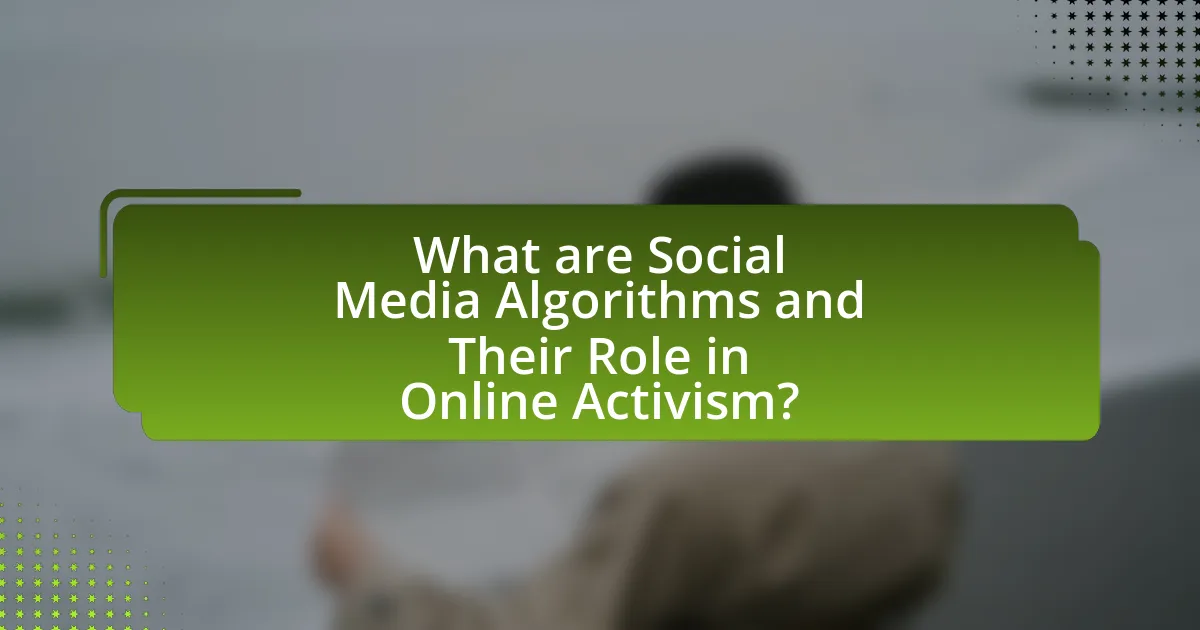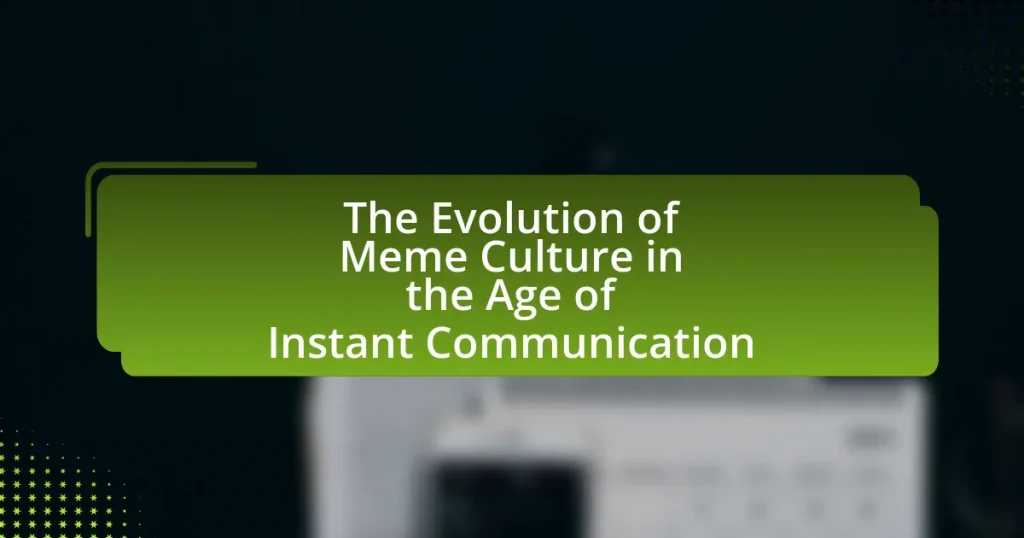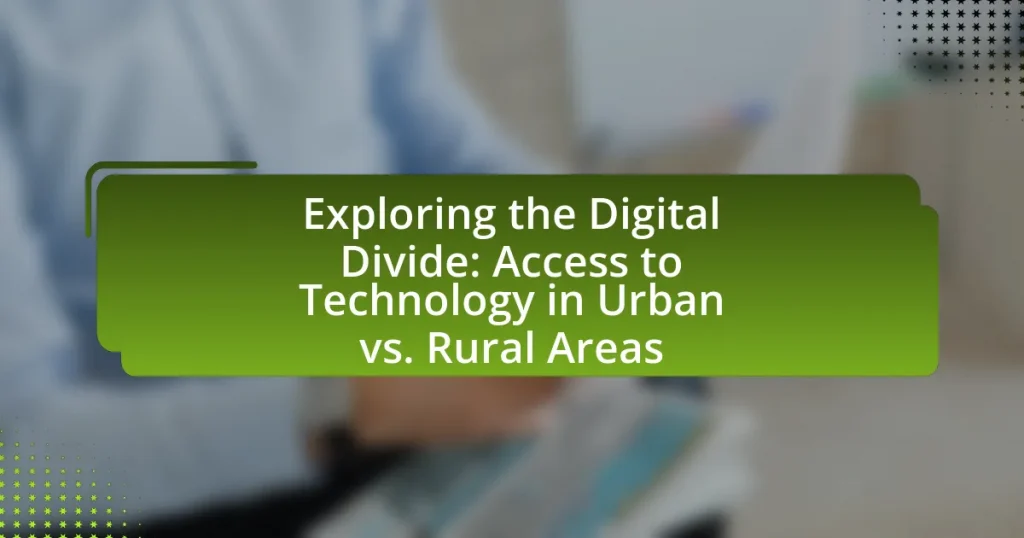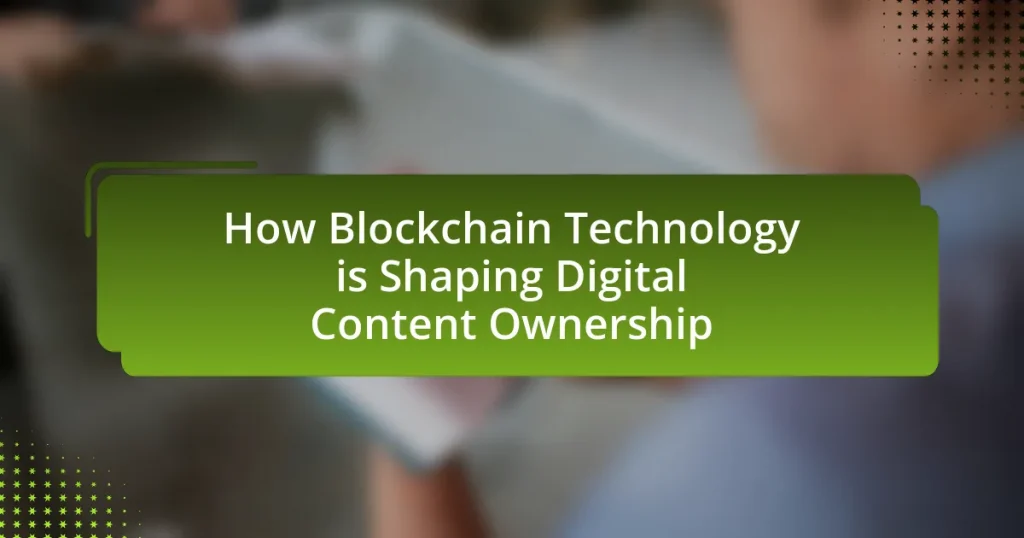Social media algorithms are mathematical formulas that determine the visibility and ranking of content on platforms, playing a significant role in online activism. They analyze user engagement metrics, content relevance, and personalization factors to prioritize posts, which can amplify social justice movements and mobilize support. However, these algorithms also create challenges, such as algorithmic bias and misinformation, which can limit the visibility of marginalized voices and hinder activist efforts. The article explores how algorithms influence user engagement, the reach of activist movements, and the strategies activists can adopt to navigate these complexities effectively.

What are Social Media Algorithms and Their Role in Online Activism?
Social media algorithms are complex mathematical formulas used by platforms to determine the visibility and ranking of content in users’ feeds. These algorithms play a crucial role in online activism by amplifying messages, organizing movements, and facilitating community engagement. For instance, algorithms prioritize content that generates high engagement, which can lead to increased visibility for social justice campaigns, as seen in movements like Black Lives Matter, where posts with significant interactions reached wider audiences. This amplification effect can mobilize support and drive real-world action, demonstrating the power of algorithms in shaping public discourse and activism.
How do social media algorithms function?
Social media algorithms function by analyzing user behavior to determine which content to display in a user’s feed. These algorithms utilize data such as likes, shares, comments, and time spent on posts to prioritize content that aligns with individual user preferences. For instance, Facebook’s algorithm employs machine learning techniques to assess engagement metrics, ensuring that posts from friends and pages a user interacts with frequently appear more prominently. This targeted approach enhances user experience but can also create echo chambers, influencing the visibility of diverse perspectives, which is particularly relevant in the context of online activism.
What are the key components of social media algorithms?
The key components of social media algorithms include user engagement metrics, content relevance, and personalization factors. User engagement metrics, such as likes, shares, and comments, determine how content is prioritized in a user’s feed, as higher engagement typically signals greater interest. Content relevance is assessed through keywords, hashtags, and user behavior, ensuring that the displayed content aligns with users’ interests and past interactions. Personalization factors involve tailoring content based on individual user data, including demographics and previous activity, which enhances user experience and retention. These components collectively influence the visibility and reach of content on social media platforms, impacting online activism by determining which messages gain traction and reach wider audiences.
How do algorithms determine content visibility?
Algorithms determine content visibility by analyzing user engagement metrics, relevance, and contextual factors. These algorithms prioritize content that aligns with user preferences, such as likes, shares, and comments, which indicate interest and engagement. For instance, Facebook’s algorithm uses a ranking system that considers factors like the type of content, the relationship between users, and the recency of posts to decide what appears in a user’s feed. Research by the Pew Research Center shows that 64% of Americans believe social media platforms have too much control over the news and information they see, highlighting the significant influence algorithms have on content visibility.
Why are social media algorithms significant for online activism?
Social media algorithms are significant for online activism because they determine the visibility and reach of content shared by activists. These algorithms prioritize posts based on user engagement, relevance, and other factors, which can amplify messages and mobilize support for social causes. For instance, a study by the Pew Research Center found that 69% of adults in the U.S. use social media, making it a crucial platform for activists to disseminate information quickly and effectively. Additionally, algorithms can create echo chambers, where users are exposed primarily to viewpoints that align with their own, potentially increasing the intensity of activism within specific communities. This dynamic illustrates how algorithms shape the landscape of online activism by influencing which messages gain traction and how communities organize around social issues.
How do algorithms influence user engagement in activism?
Algorithms significantly influence user engagement in activism by determining the visibility of content shared on social media platforms. These algorithms prioritize posts based on user interactions, such as likes, shares, and comments, which can amplify certain activist messages while suppressing others. For instance, a study by the Pew Research Center found that 64% of Americans believe social media has a significant impact on political activism, indicating that algorithmic curation shapes public discourse and mobilization efforts. Consequently, content that resonates with users’ interests is more likely to be promoted, leading to increased engagement and participation in activist movements.
What role do algorithms play in shaping public discourse?
Algorithms play a crucial role in shaping public discourse by determining the visibility and reach of content shared on social media platforms. These algorithms analyze user behavior, preferences, and interactions to curate personalized feeds, which can amplify certain narratives while suppressing others. For instance, a study by the Pew Research Center found that 64% of Americans believe social media has a mostly negative effect on the way things are going in the country, highlighting concerns about echo chambers and misinformation. This selective exposure influences public opinion and can mobilize or demobilize social movements, thereby directly impacting online activism.

How do Social Media Algorithms Affect the Reach of Activist Movements?
Social media algorithms significantly influence the reach of activist movements by determining which content is prioritized in users’ feeds. These algorithms often favor posts that generate high engagement, such as likes, shares, and comments, which can amplify the visibility of certain activist messages while suppressing others that may not engage users as effectively. For instance, a study by the Pew Research Center found that 64% of Americans believe social media has a mostly positive effect on activism, highlighting its role in mobilizing support. However, the same algorithms can also create echo chambers, limiting exposure to diverse viewpoints and potentially marginalizing less popular movements. This dual effect underscores the complexity of social media’s role in shaping public discourse and the effectiveness of activist campaigns.
What factors influence the reach of activist content?
The reach of activist content is influenced by several key factors, including social media algorithms, audience engagement, and the timing of posts. Social media algorithms prioritize content based on user interactions, meaning that posts that receive more likes, shares, and comments are more likely to be seen by a wider audience. Research indicates that content that resonates emotionally with users tends to generate higher engagement, which in turn boosts visibility due to algorithmic preferences. Additionally, the timing of posts plays a crucial role; content shared during peak user activity periods is more likely to reach a larger audience. Studies show that posts made during evenings and weekends often receive more engagement, further enhancing their reach.
How does algorithmic bias impact activist visibility?
Algorithmic bias significantly reduces activist visibility by favoring certain narratives and content over others, often marginalizing underrepresented voices. For instance, social media platforms utilize algorithms that prioritize engagement metrics, which can lead to the amplification of mainstream or popular content while suppressing posts from activists advocating for less mainstream issues. Research by the Data & Society Research Institute indicates that marginalized groups face a 30% lower visibility rate on platforms like Facebook and Twitter due to these biased algorithms. This disparity in visibility can hinder the effectiveness of activism, as crucial messages may not reach wider audiences, ultimately impacting social change efforts.
What are the implications of algorithm changes for activist campaigns?
Algorithm changes significantly affect activist campaigns by altering the visibility and reach of their messages. When social media platforms modify their algorithms, they can prioritize certain types of content over others, which may lead to reduced exposure for activist posts. For instance, a study by the Pew Research Center found that algorithmic changes can decrease engagement rates by up to 50%, limiting the ability of activists to mobilize support and raise awareness. Additionally, algorithm changes can create echo chambers, where users are only exposed to viewpoints that reinforce their beliefs, making it harder for activists to reach diverse audiences. These implications highlight the critical need for activists to adapt their strategies in response to evolving social media landscapes.
How do algorithms impact the mobilization of online communities?
Algorithms significantly influence the mobilization of online communities by determining the visibility and reach of content shared within those communities. These algorithms prioritize certain posts based on user engagement metrics, which can amplify messages that resonate with a larger audience while suppressing less popular content. For instance, research by the Pew Research Center indicates that 64% of Americans believe social media has a significant impact on political activism, highlighting how algorithm-driven visibility can mobilize users around specific causes. Consequently, the design and functionality of these algorithms shape the dynamics of community engagement, enabling rapid organization and action in response to social issues.
What strategies can activists use to navigate algorithmic challenges?
Activists can navigate algorithmic challenges by employing strategies such as diversifying their platforms, utilizing targeted hashtags, and engaging in community building. Diversifying platforms allows activists to reach different audiences, as algorithms vary across social media sites; for instance, content that performs well on Twitter may not have the same impact on Instagram. Utilizing targeted hashtags can enhance visibility, as research shows that posts with relevant hashtags can increase engagement by up to 12.6%. Engaging in community building fosters relationships and encourages organic sharing, which can counteract algorithmic limitations by amplifying reach through personal networks. These strategies collectively help activists adapt to and mitigate the effects of social media algorithms on their messaging and outreach efforts.
How do algorithms affect the formation of online activist networks?
Algorithms significantly influence the formation of online activist networks by determining which content is prioritized and disseminated to users. These algorithms analyze user behavior, engagement patterns, and preferences to curate feeds, thereby amplifying certain messages while suppressing others. For instance, research by the Pew Research Center indicates that social media algorithms can create echo chambers, where users are predominantly exposed to viewpoints that align with their own, thus fostering a more cohesive but potentially polarized activist community. This selective exposure can enhance mobilization efforts by connecting like-minded individuals, but it may also limit the diversity of perspectives within these networks.

What are the Challenges and Opportunities Presented by Social Media Algorithms for Activism?
Social media algorithms present both challenges and opportunities for activism. The challenges include algorithmic bias, which can suppress marginalized voices and limit the visibility of certain movements, as evidenced by studies showing that content from underrepresented groups often receives less engagement due to algorithmic prioritization of popular content. Additionally, the rapid spread of misinformation can undermine activist efforts, as false narratives can overshadow legitimate causes, leading to confusion and division among supporters.
Conversely, opportunities arise from the ability of algorithms to amplify messages and mobilize support quickly. Activists can leverage trending topics to gain visibility, as seen in movements like Black Lives Matter, which utilized social media algorithms to spread awareness and organize protests effectively. Furthermore, targeted advertising enabled by algorithms allows activists to reach specific demographics, enhancing engagement and support for their causes. Thus, while social media algorithms pose significant challenges, they also offer powerful tools for enhancing the reach and impact of activism.
What challenges do activists face due to algorithmic changes?
Activists face significant challenges due to algorithmic changes, primarily including reduced visibility of their content and the spread of misinformation. Algorithm updates often prioritize engagement metrics over the relevance of posts, leading to a decline in organic reach for activist messages. For instance, a study by the Pew Research Center found that algorithmic changes on platforms like Facebook can decrease the visibility of posts from pages advocating for social causes by up to 50%. Additionally, algorithms can amplify misleading information, overshadowing legitimate activist content and creating a hostile environment for advocacy efforts. This dual challenge of diminished reach and increased misinformation complicates the ability of activists to mobilize support and effectively communicate their messages.
How can misinformation spread through social media algorithms?
Misinformation can spread through social media algorithms by prioritizing engagement over accuracy, leading to the amplification of sensational or misleading content. Algorithms are designed to maximize user interaction, often promoting posts that generate strong emotional reactions, regardless of their factual correctness. For instance, a study by the Massachusetts Institute of Technology found that false news stories are 70% more likely to be retweeted than true stories, highlighting how algorithms favor sensationalism. This prioritization can create echo chambers, where users are repeatedly exposed to the same misleading information, further entrenching false beliefs and influencing public opinion.
What are the risks of algorithmic censorship for activists?
Algorithmic censorship poses significant risks for activists by limiting their visibility and reach on social media platforms. This suppression can lead to reduced engagement with their causes, as algorithms often prioritize mainstream content over niche or dissenting voices. For instance, a study by the Pew Research Center found that 64% of Americans believe social media platforms censor political viewpoints, which can disproportionately affect marginalized groups advocating for social change. Additionally, algorithmic biases may inadvertently silence critical discussions, making it harder for activists to mobilize support and raise awareness about pressing issues.
What opportunities do social media algorithms create for activism?
Social media algorithms create opportunities for activism by enhancing visibility and engagement for social movements. These algorithms prioritize content that generates high interaction rates, allowing activist messages to reach broader audiences quickly. For instance, the Black Lives Matter movement gained significant traction through algorithmic amplification on platforms like Twitter and Instagram, where posts related to the movement were widely shared and engaged with, leading to increased awareness and participation in protests. Additionally, algorithms can facilitate the formation of online communities, enabling activists to connect, organize, and mobilize more effectively. This connectivity is evidenced by the rapid organization of global climate strikes, where social media played a crucial role in rallying support and disseminating information.
How can activists leverage algorithms for greater impact?
Activists can leverage algorithms by strategically utilizing social media platforms to amplify their messages and reach targeted audiences. By understanding how algorithms prioritize content, activists can create engaging posts that align with trending topics and user interests, thereby increasing visibility. For instance, research indicates that posts with strong visuals and emotional appeal are more likely to be shared, which can enhance the spread of their cause. Additionally, activists can analyze engagement metrics to refine their strategies, ensuring that their content resonates with followers and encourages action. This approach has been shown to significantly boost participation in campaigns, as evidenced by the success of movements like Black Lives Matter, which effectively utilized social media algorithms to mobilize support and raise awareness.
What tools are available to analyze algorithmic performance in activism?
Tools available to analyze algorithmic performance in activism include social media analytics platforms, sentiment analysis tools, and network analysis software. Social media analytics platforms like Hootsuite and Sprout Social provide insights into engagement metrics, audience demographics, and content performance, allowing activists to assess the effectiveness of their campaigns. Sentiment analysis tools, such as Brandwatch and Lexalytics, analyze public sentiment towards specific issues or movements, helping activists understand the emotional response to their messaging. Network analysis software, like Gephi and NodeXL, visualizes the connections and interactions within activist networks, revealing how information spreads and identifying key influencers. These tools collectively enable activists to evaluate and optimize their strategies based on data-driven insights.
What best practices can activists adopt to enhance their online presence?
Activists can enhance their online presence by consistently creating engaging content that resonates with their target audience. This involves utilizing storytelling techniques to share personal experiences and impactful narratives, which can significantly increase audience engagement. Research indicates that posts with emotional appeal receive 60% more shares on social media platforms, demonstrating the effectiveness of this approach. Additionally, activists should leverage analytics tools to track engagement metrics, allowing them to refine their strategies based on what content performs best. By optimizing posting times and utilizing relevant hashtags, activists can further increase their visibility, as studies show that posts made during peak engagement hours can lead to a 50% increase in reach.



